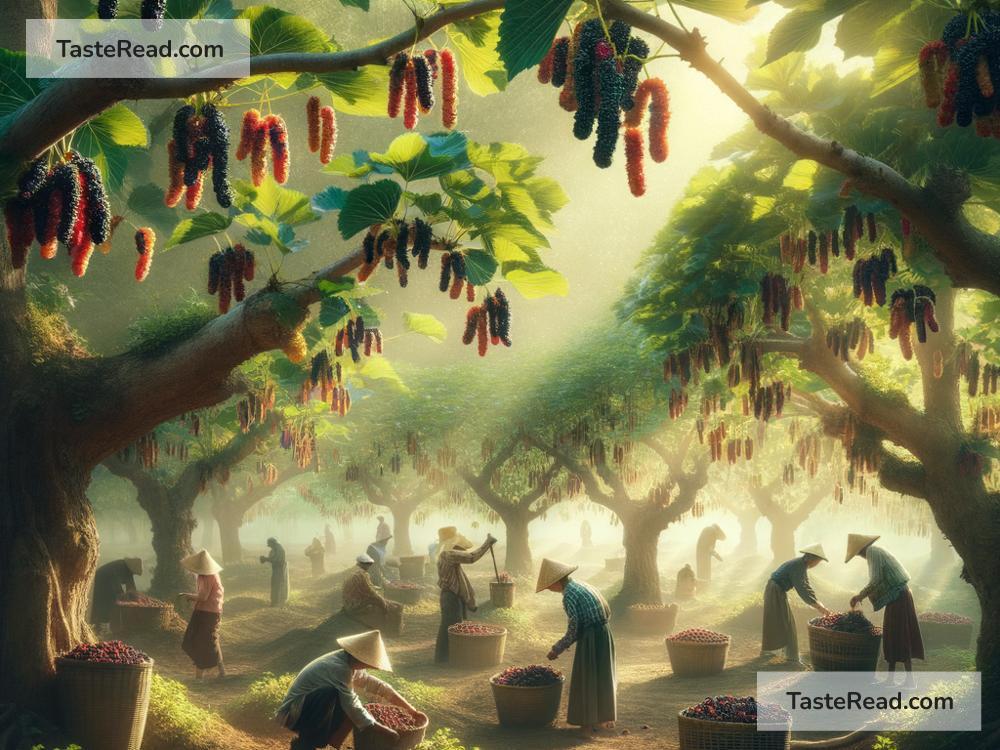The Fascinating Story of Mulberries in Ancient Agriculture
Mulberries may not be as famous as apples or grapes, but these small, juicy fruits have played a surprising role in the history of agriculture. Their importance stretches back thousands of years. Not only were mulberries valued for their sweet taste, but they were also tied to one of humanity’s most remarkable innovations: silk production. Let’s take a closer look at the fascinating story of mulberries and their impact on ancient farming and society.
What Are Mulberries?
Mulberries are small fruits that grow on trees or shrubs, and they come in three main types: white, red, and black. White mulberries (Morus alba) are especially famous because their leaves are the primary food for silkworms, the tiny insects that produce silk. Mulberries grow in clusters, and their flavors range from sweet to tart, depending on the species and ripeness. These fruits are not only tasty but also packed with nutrients, making them a valuable crop for humans and animals alike.
Mulberries and Silk: A Match Made in Nature
Mulberries became crucial to ancient agriculture because of their connection to sericulture, the art of raising silkworms to make silk. This practice began thousands of years ago in China, where silk production was considered a closely guarded secret. According to legend, Empress Leizu discovered silk when a silkworm cocoon accidentally fell into her tea. She noticed the threads unraveling and realized they could be woven into fabric.
Silk is created from the cocoons of silkworms, which feed exclusively on mulberry leaves. Farmers grew mulberry trees to ensure a steady supply of food for these insects. Over time, mulberry cultivation became an essential part of ancient agriculture in regions producing silk, especially China. Silk was highly prized for its smooth texture, strength, and beauty. It became a symbol of wealth and luxury, and its production transformed mulberries into a vital crop.
The Spread of Mulberries Across Regions
As the demand for silk grew, so did the importance of mulberry trees. They were cultivated far beyond China as silk production spread to other regions like India, Persia (modern-day Iran), and eventually Europe. Mulberries could thrive in a variety of climates and soils, making them adaptable for different agricultural landscapes.
In ancient times, the Silk Road helped spread mulberries and the art of silk-making across continents. This network of trade routes connected China to Central Asia, the Middle East, and Europe. Merchants and travelers carried not only silk fabric but also the knowledge and materials needed for its production, such as mulberry seeds and silkworm eggs. Slowly, mulberries became a familiar crop in many parts of the world, especially in areas involved in silk trade.
The Role of Mulberries in Local Economies
Mulberries were valuable in ancient agricultural systems for more than just silk production. Their fruit provided food for humans and animals, while their leaves and wood had various uses. Mulberry trees were often planted along boundaries or in orchards because of their ability to grow quickly and provide shade. Farmers and families appreciated their simple cultivation requirements and multiple benefits.
The fruit of the mulberry tree was eaten fresh or dried, and it could be used to make jams, wines, and desserts. In addition, the leaves served as animal fodder when silkworm production was low. Mulberry wood was strong and easy to work with, making it useful for furniture, tools, and construction.
Mulberries in Ancient Culture and Mythology
Mulberries also found their way into ancient stories and traditions. In Greek mythology, mulberries are linked to the tragic love story of Pyramus and Thisbe, two lovers who were forbidden to be together. According to legend, their blood stained the originally white mulberries red, which is why red mulberries exist today. This tale symbolized deep love and sacrifice, and it helped mulberries gain a place in the cultural imagination.
In Eastern traditions, mulberry trees held spiritual significance. For example, in China, they were associated with longevity and resilience. Some ancient texts mention mulberries as medicinal plants believed to improve health and vitality.
Mulberries Today: A Legacy of Ancient Agriculture
Mulberries may not be as central to our lives today as they were in ancient times, but they continue to be cultivated for food, supplements, and shade. In many countries, mulberries are still grown as part of silk production, although industrial techniques have largely replaced traditional sericulture.
The story of mulberries reminds us of the creativity and ingenuity of ancient farmers. By understanding the needs of silkworms and cultivating mulberry trees, early agricultural societies helped lay the foundation for thriving silk industries. This interconnected relationship between plants, animals, and humans demonstrates the importance of farming in shaping civilizations.
Conclusion
The humble mulberry tree played a big role in ancient agriculture, thanks to its strong connection to silk production and its versatility as a crop. From the bustling markets of ancient China to the trade routes of the Silk Road, mulberries helped shape economies, cultures, and societies. This fascinating story shows how even the simplest plants can have a lasting impact on human history. Next time you enjoy a sweet or tart mulberry, take a moment to appreciate the rich history hidden within this tiny fruit!


